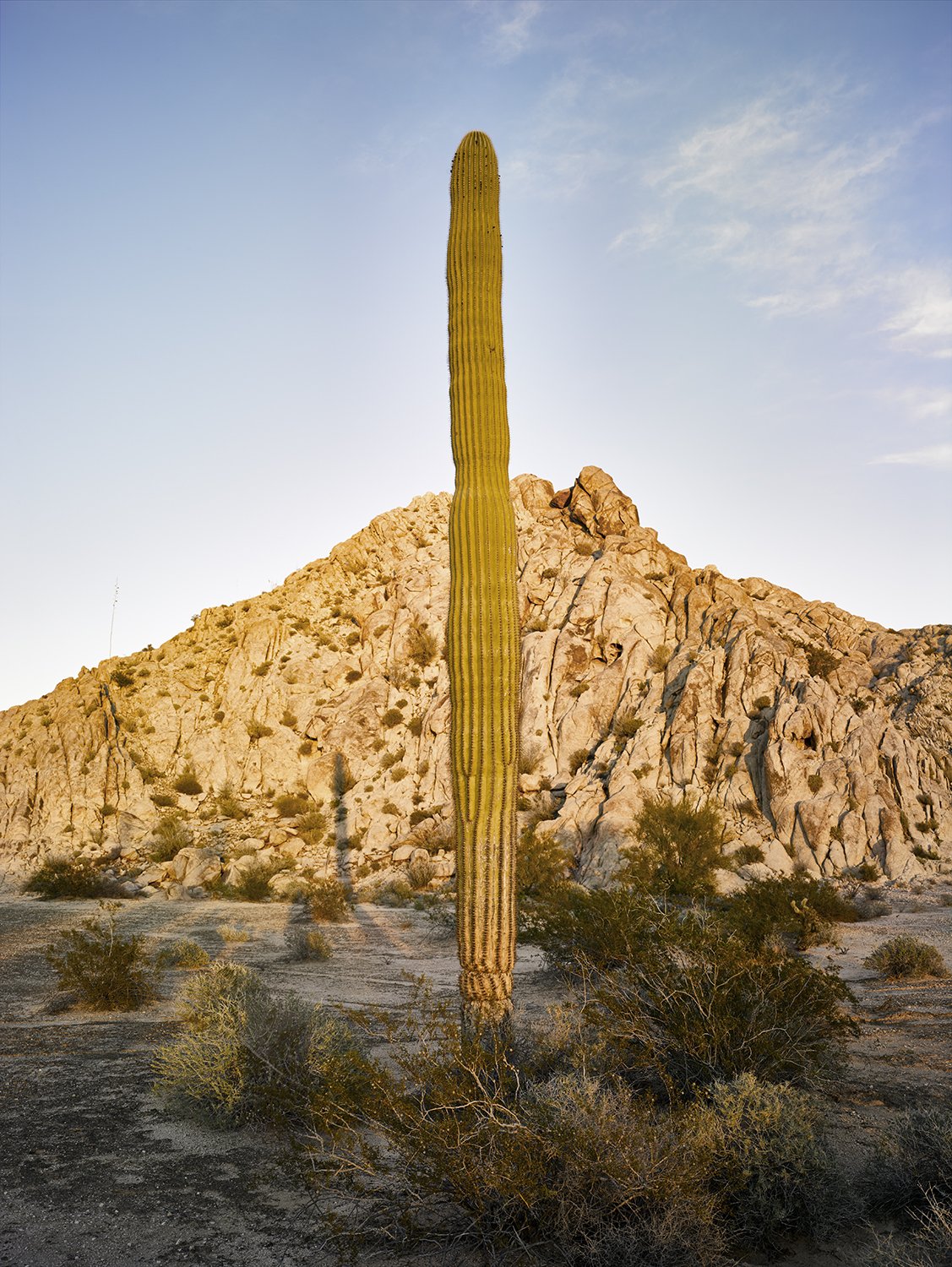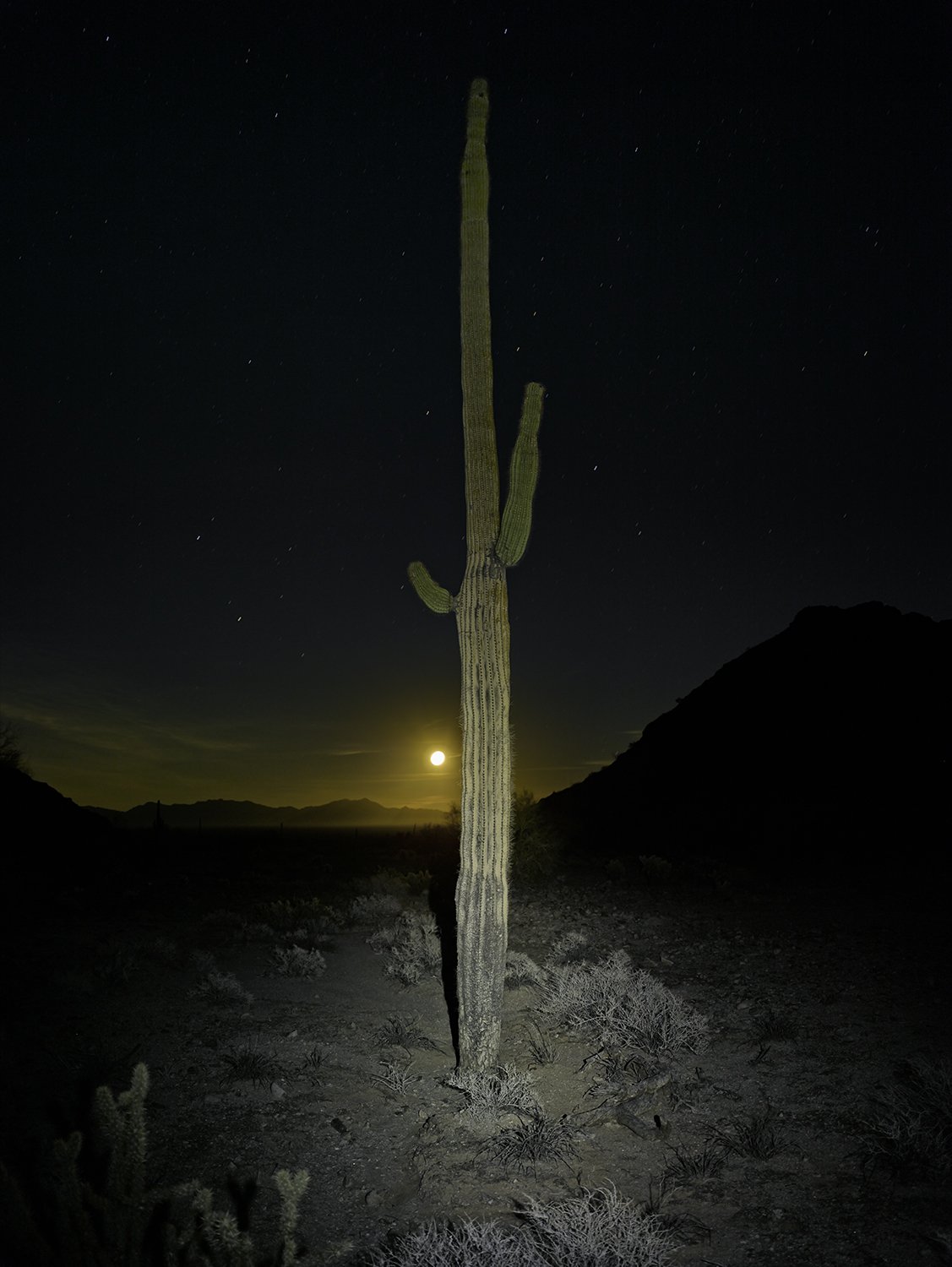2013-2015
El Camino
del Diablo
In the fall of 1860 a young man named Raphael Pumpelly rode a stagecoach west to Tucson, Arizona, to begin his job as a mining engineer close to the Mexican border. Pumpelly found the would make territory lawless and filled with danger. He wrote that "murder was the order of the day," and he managed several times to escape death himself, often by a matter of minutes. He traveled a historical route along the US-Mexico border called el Camino del Diablo, the road of the devil, while being chased by Mexican bandits and with apprehension of the dangers but at the same time soon appreciating the natural beauty of the desert around him. Later he wrote a book about his experiences and his around-the-world trip that took him from Arizona to Japan and China. Titled Across America and Asia, Pumpelly's book was well read at the time and went into several print editions.
I first became aware of Pumpelly's story sometime in the 1990s. I thought that someday his text, regarded as accurate by many historians, would make a good subject for a project. I put the idea off until 2012, when I went on sabbatical from teaching and had time to camp and travel the Camino del Diablo during the cooler winter months. I thought six months would be adequate to revisit the road, experience the same route Pumpelly traveled, and make enough photographs to compare the present to the past. But I soon realized that I was enjoying the experience so much that I wanted to extend the work.
Today, most of the Camino del Diablo is on the Barry Goldwater Bombing Range, and the US-Mexico border is a militarized zone constantly patrolled by government agents and crisscrossed by air and ground forces practicing for war. Anti-immigrant politics and talk of a bigger border wall add an occupied feel to a place that already registers a history of violence and surveillance.
Camino travelers often hide from detection, whether immigrants or drug smugglers, moving north under the cover of night or the ruggedness of the terrain. A still hostile climate kills many who dare travel in hot weather. Yet the Camino also crosses one of the wildest and most beautiful regions of the Sonoran Desert. There's a legacy of human presence on the Camino, sometimes tragedy, left only in traces. Signs of passage remain for centuries in Arizona's dry climate. It is a route at the compelling intersection of transience, danger, and beauty.
The book El Camino del Diablo was released by Radius Books in 2016 and reproduced the original text of Pumpelly's Arizona experiences directly from his book. I considered this project a twin to the Half-Life of History. Both projects used an original historical reference that was not evident in photographs or other visual images as a point of departure. Both were responses to a history of images created only by text and stories. Both reference largely forgotten histories through the details of location and attempt to create relevance through parallels to the present day.
Text with images below are excerpts from Pumpelly’s journey to Tucson (Chapter X).
Portrait of Raphael Pumpelly
Raphael Pumpelly’s Across American and Asia: Notes of a Five Years’ Journey Around the World: and of Residence in Arizona, Japan and China.
Published by Leypoldt & Holt, New York in 1869.


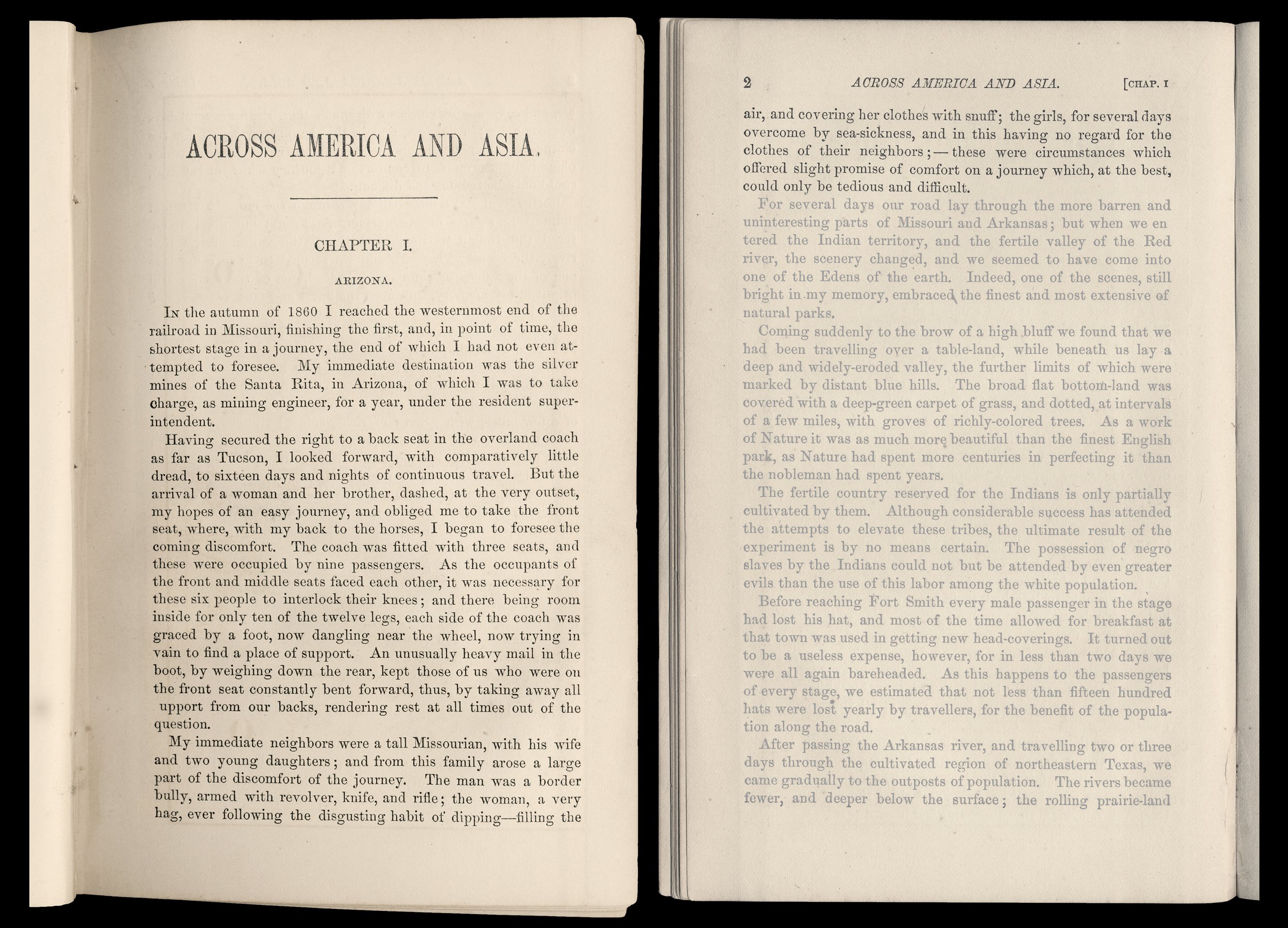


“In the autumn of 1860 I reached the westernmost
end of the railroad in Missouri, finishing the first, and,
in point of time, the shortest stage in a journey,
the end of which I had not even attempted to foresee.
I looked forward, with comparatively little dread, to
sixteen days and nights of continuous travel
The scenery of Arizona, dependent in great
part on its climate and vegetation, is unique
and might belong to another planet.”

Approaching the Gila Mountains, 2013

Sign explaining the history of El Camino del Diablo, with bullet holes, 2013

Second tank at Tinajas Altas, where many died trying to reach its water, 2013

Standing before the sunrise at Raven Butte, 2014
"As we continued our journey southward,
the character of the country gradually changed.
The effect of the grand scenery and wonderfully
clear atmosphere of this strange land, is to
intensify the feelings of pain or pleasure which
at the time sway the traveler's mind.
Seen through its wonderfully clear atmosphere,
with a bright sun and an azure sky,
or with every detail brought out
by the intense light of the moon,
this valley has seemed a paradise and again,
under circumstances of intense anxiety,
it has been a very prison of hell."
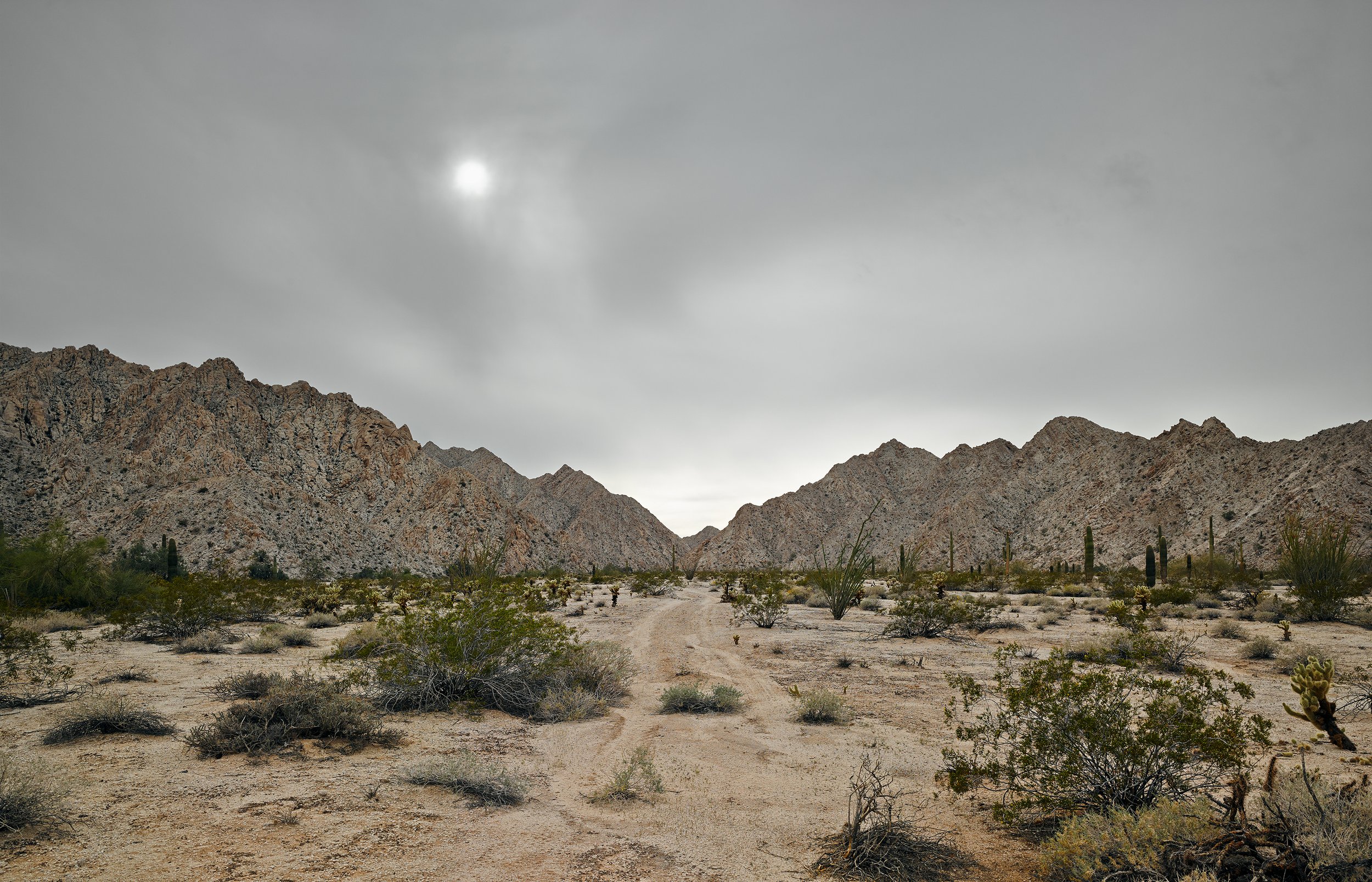
Faint trail, granitic. mountains near Raven Butte, 2013

Abandoned windmill, Bates Well, Cabeza Prieta, 2013

Silver of the moon above El Camino del Diablo, 2013

Bighorn sheep through the border fence, looking into Mexico, 2015
"The social condition of Arizona from 1857 till 1862,
and later, was one which could not fail to furnish
much food for thought to even a superficial observer.
An American population, both floating and settled,
was soon formed, mostly from the Southern States, and
of men unaccompanied by families. Many of these were
old frontiersmen, many more were refugees from the
slackly-administered justice of Texas, New Mexico, and
California... a large number of the ruffians and
gamblers...made their home in Arizona.
One cannot come much in contact with such men
without feeling how little human nature has been affected
by the march of society, and how subject to conventional
influences are even the passions of man."

Ocotillo & mosque made from shipping containers, marine training camp, Copper Mountains, 2013
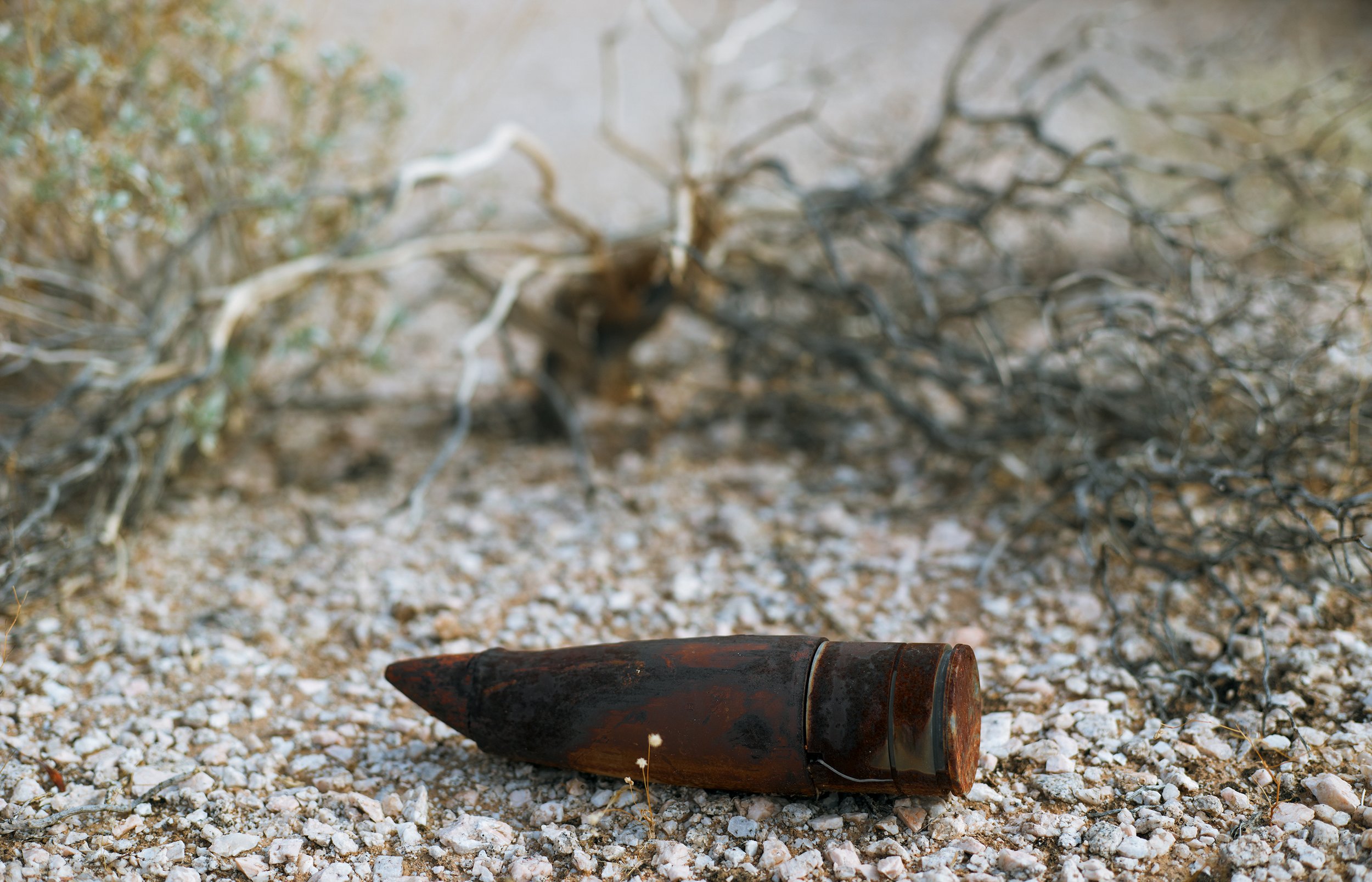
Unexploded ordnance, Goldwater Bombing Range, 2013
"There was hardly a pretense at a civil organization; law was unknown,
and the nearest court was several hundred miles distant in New Mexico.
Indeed, every man took the law into his own hands, and the life of a neighbor
was valued in the inverse ratio of the impunity with which it could be taken.
Murder was the order of the day among a total white and peon population of a
few thousand souls it was daily committed by Americans upon Americans,
Mexicans, and Indians by Mexicans upon Americans and the hand of the Apache was,
not without much reason, against both of the intruding races."

Hovering over smuggler: Border Patrol helicopter through binoculars at sunset, 2013

Black sole, Agua Caliente Road, 2013

Fence separating the United States and Mexico, south of the Gila Mountain, 2015
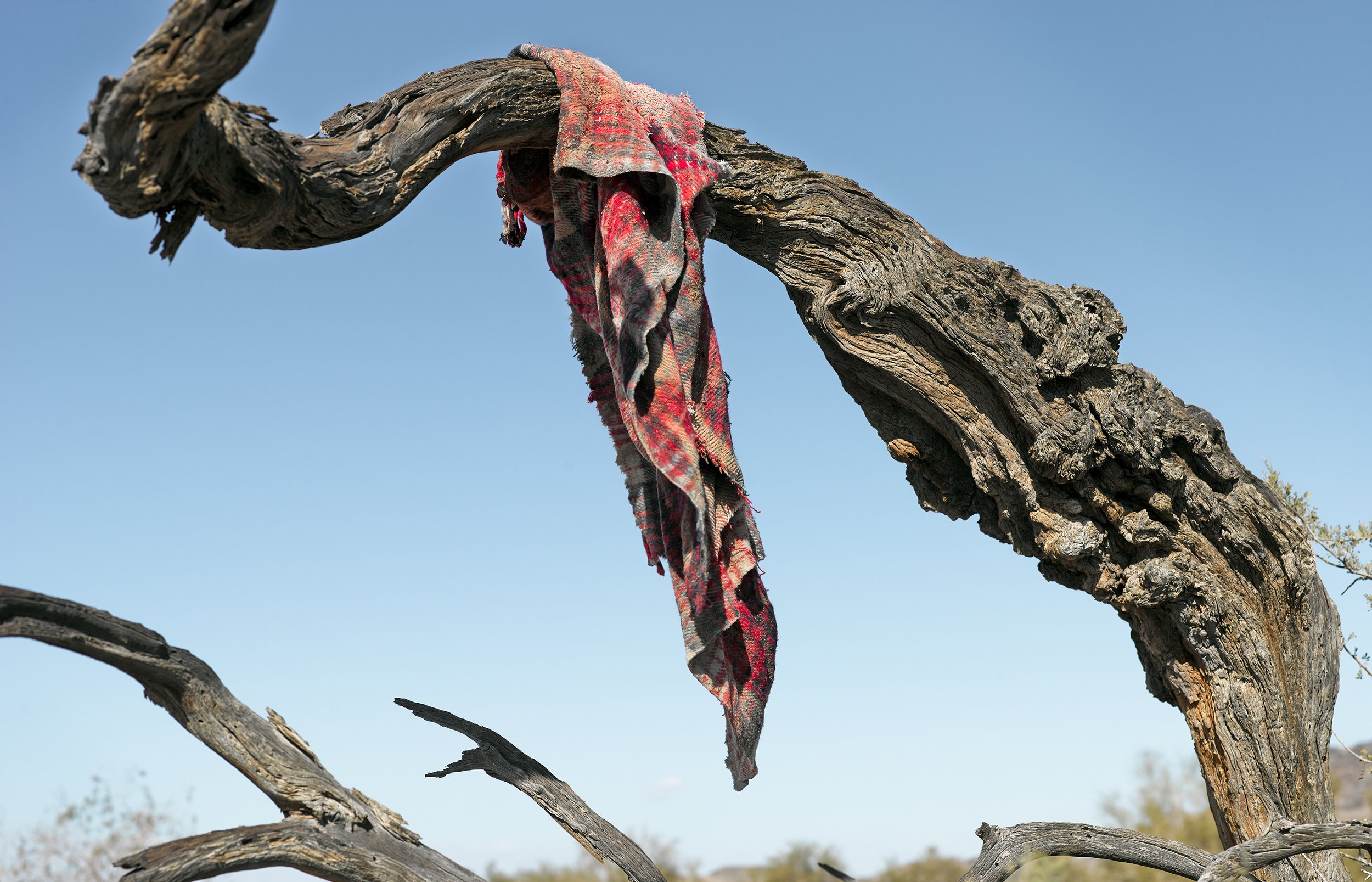
Blanket left in passing,2013

Smuggler's radio found off Bates Well Road, 2016
"On these vast deserts
the sluggish rattlesnake
meets the traveler at every turn;
the most powerful inhabitant,
his sway is undisputed
by the scorpions and the lizards,
on which he feeds."

Rattlesnake attempting to flee, 2013
"Only those who have traveled in a country of hostile Indians know what
it is to journey by night. The uncertain light of the stars, or even of the
moon, leaves open the widest field for the imagination to fill. Fancy gives life to
the blackened yucca, and transforms the tall stem of the century plant into the
lance of an Apache.
The ear of the traveler listens anxiously to the breathing of his horse; and his
eye, ever on the alert before and behind, must watch the motions of the horse's
ears, and scrutinize the sand for tracks, and every object within fifty yards for
the lurking-place of an Indian."
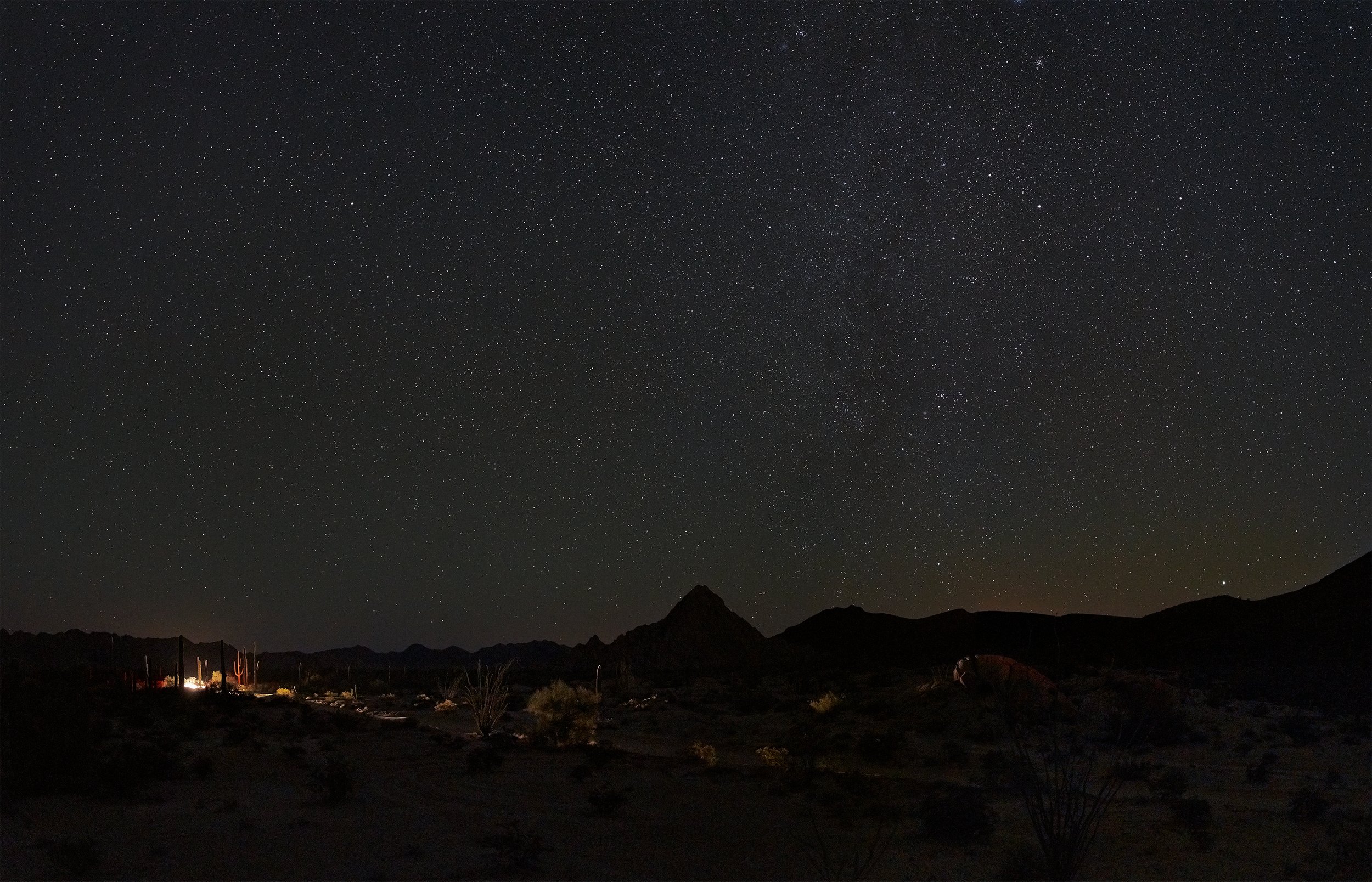
Border Patrol "cutting sign", near midnight, El Camino del Diablo, 2013
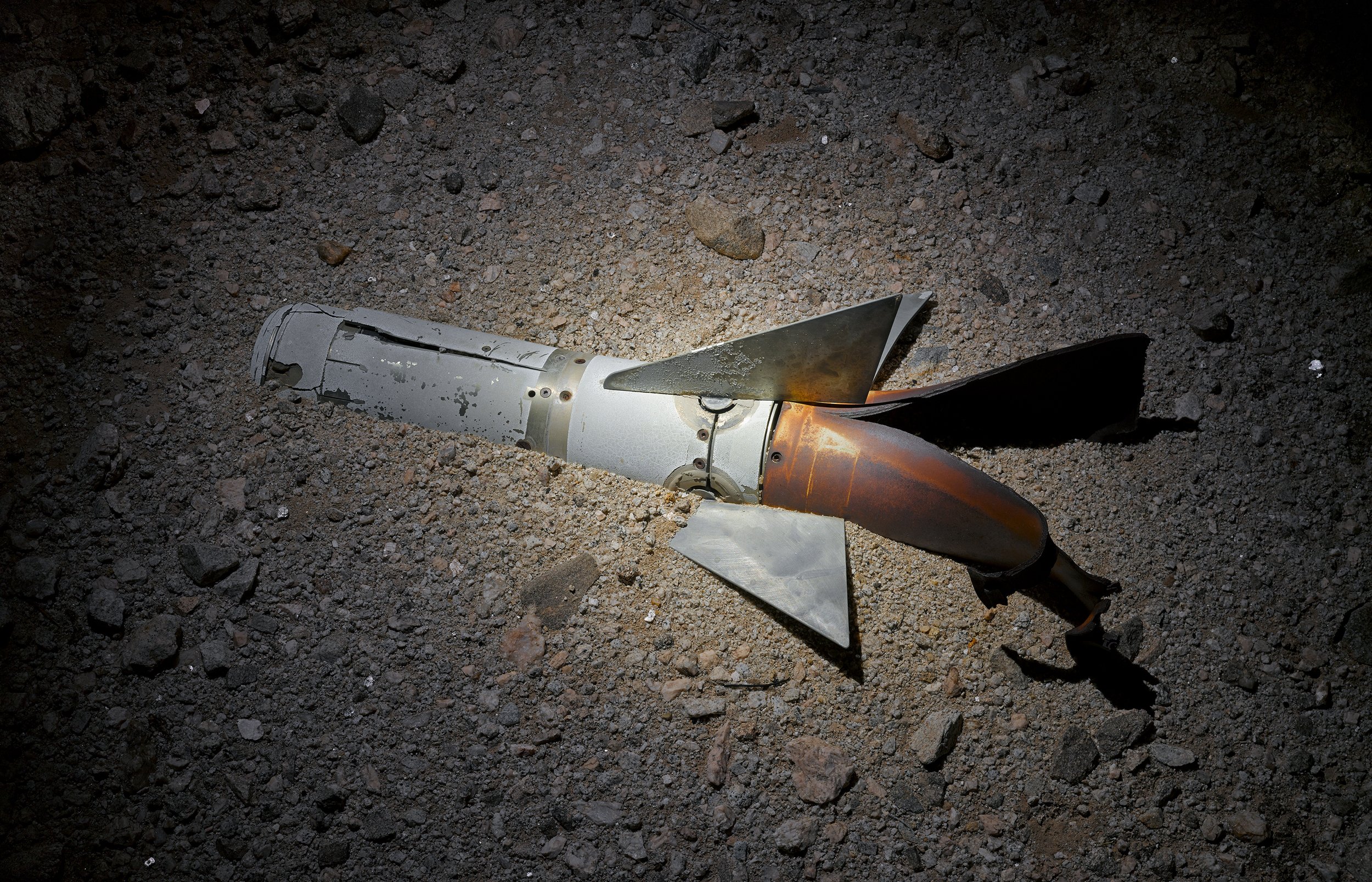
Sidewinder Missile, Goldwater Bombing Range, 2014
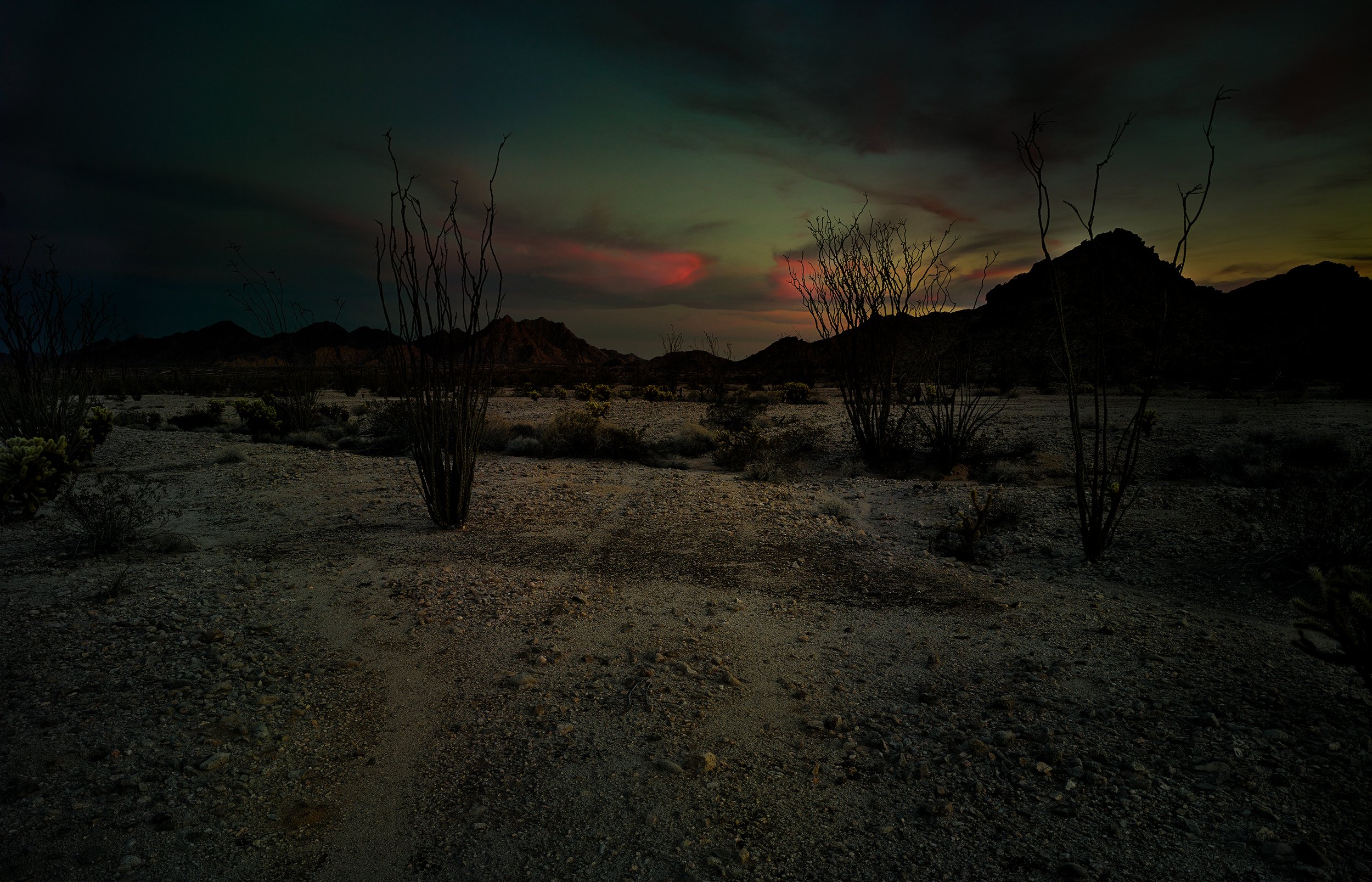
Slight track with red clouds at dusk, Copper Mountains, 2013
"The routes over these wastes are marked by countless skeletons of
cattle, horses, and sheep, and the traveler passes thousands of the
carcasses of these animals wholly preserved in the intensely dry air.
As we wound, in places, through groups of these mummies,
they seemed sentinels guarding the valley of death."

Mountaintop cross at Ajo, former mining town, 2013

Human Vertebrae, Sauceda Mountains, 2016

Jackrabbit, partially eaten by buzzards, 2014
"In a few days we approached the worst part of the desert;
the watering-places became more separated and the supply smaller.
Our route lay over broad gravelly plains, bearing only cacti, with here and
there the leafless palo-verde tree, and the never-failing greasewood bush.
In the distance, on either side, arise high granite mountains, to which the eye
turns in vain for relief; they are barren and dazzling masses of rock.
Night brought only parching winds, while during the day we sought
in vain for shelter from the fierce sun-rays. The thermometer ranged by day
between 118 and 126 degrees in the shade, rising to 160 degrees in the sun."
"Our next camp was made at the Tinaje alta or high tanks. Here, at the head of a
long ravine in the mountains, there is a series of five or six large
holes, one above the other, worked in the granite bed of the gorge.
After a rain these are all filled, but as the season advances, the lower ones
become empty, and the traveler is obliged to climb to the higher tanks
and bail water into the one below him, and from this into the next, and so
on till there is enough in the lowest to quench the thirst of his animals.
The higher tanks are accessible only at great risk to life.
After a succession of dry seasons it sometimes happens that travelers arrive
here already dying from thirst. Finding no water in the lower holes, they climb in
vain to the higher ones, where, perhaps, losing strength with the death of hope,
they fall from the narrow ledge, and the tanks, in
which they seek for life, become their graves."

Dried fish, bed of Gila River, 2013
But during the night the sky was overcast with
black clouds, and there came the first rain that had
fallen on this desert for more than two years.
Never was storm more welcome; both we
and our animals enjoyed heartily its drenching torrent
"With feelings of much anxiety we encamped on the border of the pleyas, a depressed region,
once probably a large lake, now a surface of dried mud, crossed by
ridges of shifting sand. From that camp on, there lay before us a continuous ride of nearly
thirty hours, before we could hope to find the nearest water on the Gila river, and it
was not probable that all our animals could bear up under the fatigue and thirst.
Before daybreak the sky had cleared, and with the
rising sun began the heat of another day."

Petroglyphs near Sears Point, Gila River, 2014
So strongly do these cacti resemble Grecian columns,
that one is almost tempted to look for fallen
Corinthian capitals and ruined temples."
"This giant cactus, one of the wonders of the vegetable world,
impresses a peculiar character on the scenery in which it occurs.
Often a simple shaft, nearly as large at the top as at the base,
it rises thirty and even sixty feet above the ground.
"No other part of the world is so strongly
impressed on my memory as is this region,
and especially this valley."

Saguaro gripped by its dead nurse tree, Gila Mountains, 2014
